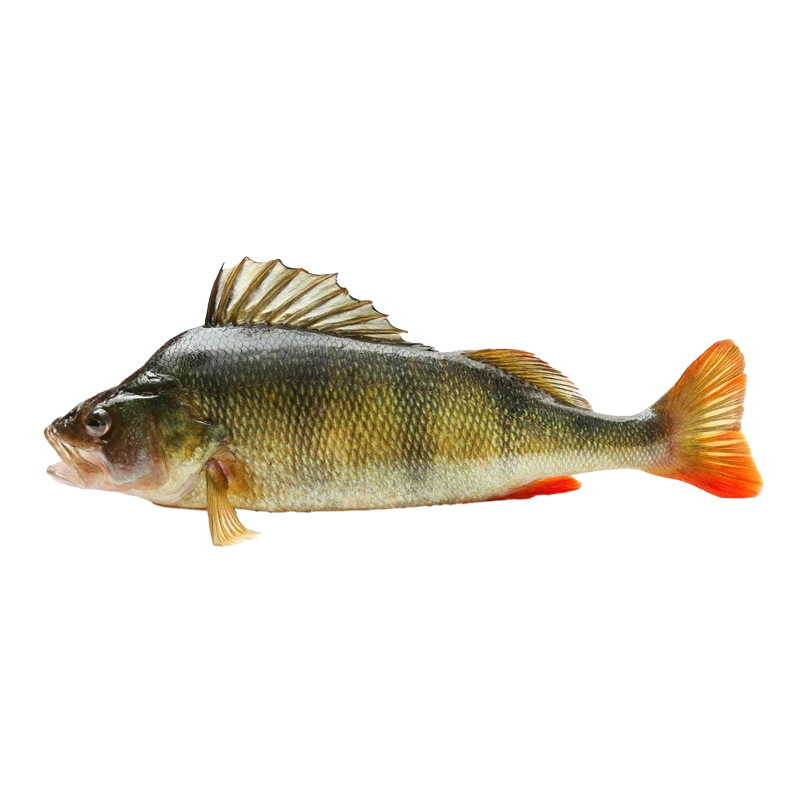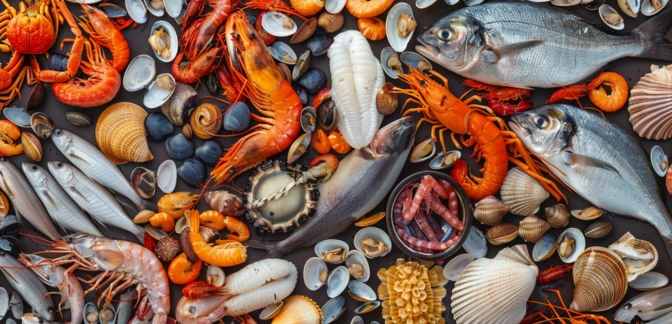Perch — Nutrients, Health Benefits, And Shopping Tips

Written by Listonic Team
Last update on September 5, 2024
Perch nutrients
Nutrition facts
Amount per 100 g
Calories
🔥 91 kcal
| Nutrition per: 100 g | Value | % Daily Value* |
|---|---|---|
| Carbs | 0 g | - |
| Fiber | 0 g | - |
| Sugars | 0 g | - |
| Glycemic Index | 0 | - |
| Protein | 20 g | 40% |
| Sodium | 90 mg | 3.91% |
| Total Fat | 1 g | 1.28% |
*The % of Daily Value (DV) tells you how much a nutrient in a serving of food contributes to a daily diet. 2,000 calories a day is used for general nutrition advice.
20 g
🧀 Good Protein Content
Perch facts & tips
Health benefits
- High in protein, essential for muscle growth, repair, and overall body function.
- Rich in omega-3 fatty acids, which support heart health, reduce inflammation, and improve brain function.
- Contains essential vitamins and minerals such as Vitamin B12, Vitamin D, selenium, and phosphorus, which support overall health and well-being.
- Low in fat and calories, making it a heart-healthy seafood option.
- Supports eye health due to its high content of omega-3 fatty acids, which are important for maintaining good vision.
- Supports immune function with its high content of essential nutrients.
Health risks
- Potential for mercury contamination as perch, like other fish, may contain mercury, which can pose health risks, particularly for pregnant women and young children if consumed in large amounts.
- Risk of allergic reactions in individuals with fish allergies, causing symptoms like itching, swelling, or anaphylaxis.
- Risk of contamination with harmful bacteria or parasites, particularly in raw or undercooked perch, leading to potential foodborne illness.
- Environmental concerns related to overfishing or unsustainable fishing practices, which can impact marine ecosystems and species populations.
How to choose perch
Fresh perch should have bright, clear eyes and firm, shiny skin. The flesh should bounce back quickly when pressed, indicating it is fresh. The gills should be red or pink, a sign of freshness.
Avoid perch that smells fishy or has slimy skin, as these are clear indicators that the fish is past its prime. Fish with dull eyes or that feels mushy should also be avoided, as it may not be safe to eat.

How to store perch
Fresh perch should be stored in the refrigerator, ideally in a sealed container on a bed of ice. Refrigeration keeps it fresh and prevents spoilage for up to two days. For longer storage, consider freezing the fish.
Leaving perch at room temperature can lead to rapid bacterial growth. Avoid storing it in plastic bags without proper ventilation, as this can trap moisture and lead to spoilage. Always ensure the fish is thoroughly cleaned before storage.
✅ Extra Tip
How long does it last?
Perch can last for 1-2 days in the refrigerator when stored in an airtight container. For longer storage, perch can be frozen for up to 6-8 months. Proper packaging, such as vacuum-sealing, helps maintain its quality over longer storage periods.
What to do with leftovers?
Leftover perch can be used in a variety of savory dishes. Flake the fish and add it to salads, sandwiches, or wraps for a light, flavorful protein, or mix it into a pasta dish with a lemon-butter sauce. Perch is also great when added to fish tacos, where its mild flavor pairs well with fresh salsa and avocado.
Use perch in a seafood stew or chowder, where its tender meat adds richness and flavor, or bake it into a fish pie with vegetables and a creamy sauce. If you have a lot of perch, consider making a batch of fish cakes by mixing the flaked fish with breadcrumbs, eggs, and seasonings, then frying until golden. Perch can also be grilled and served with a fruit salsa or used as a topping for pizzas or flatbreads. For a quick meal, serve perch over a bed of greens with a light vinaigrette or mix it into a quinoa salad with vegetables.
👨⚕️️ Medical disclaimer
Discover products from other categories
Listonic Team
Fact-checked
Our editorial team checked this article to make sure it was accurate at the time of publishing it.
Get the top-rated shopping list app on your phone!







